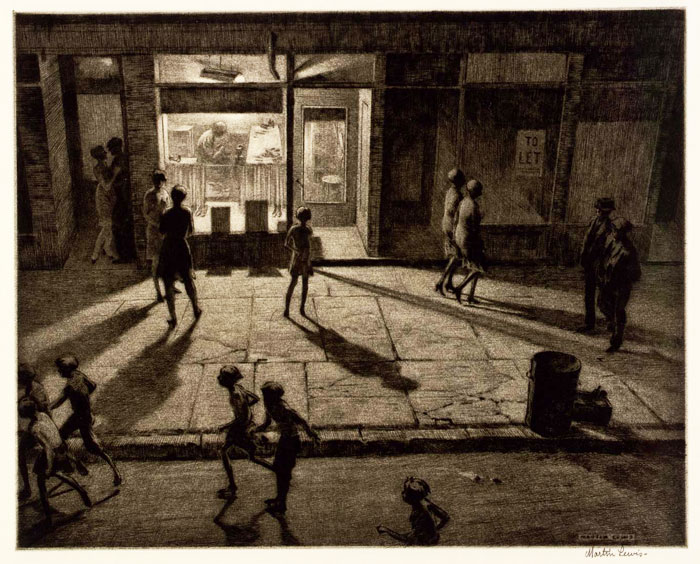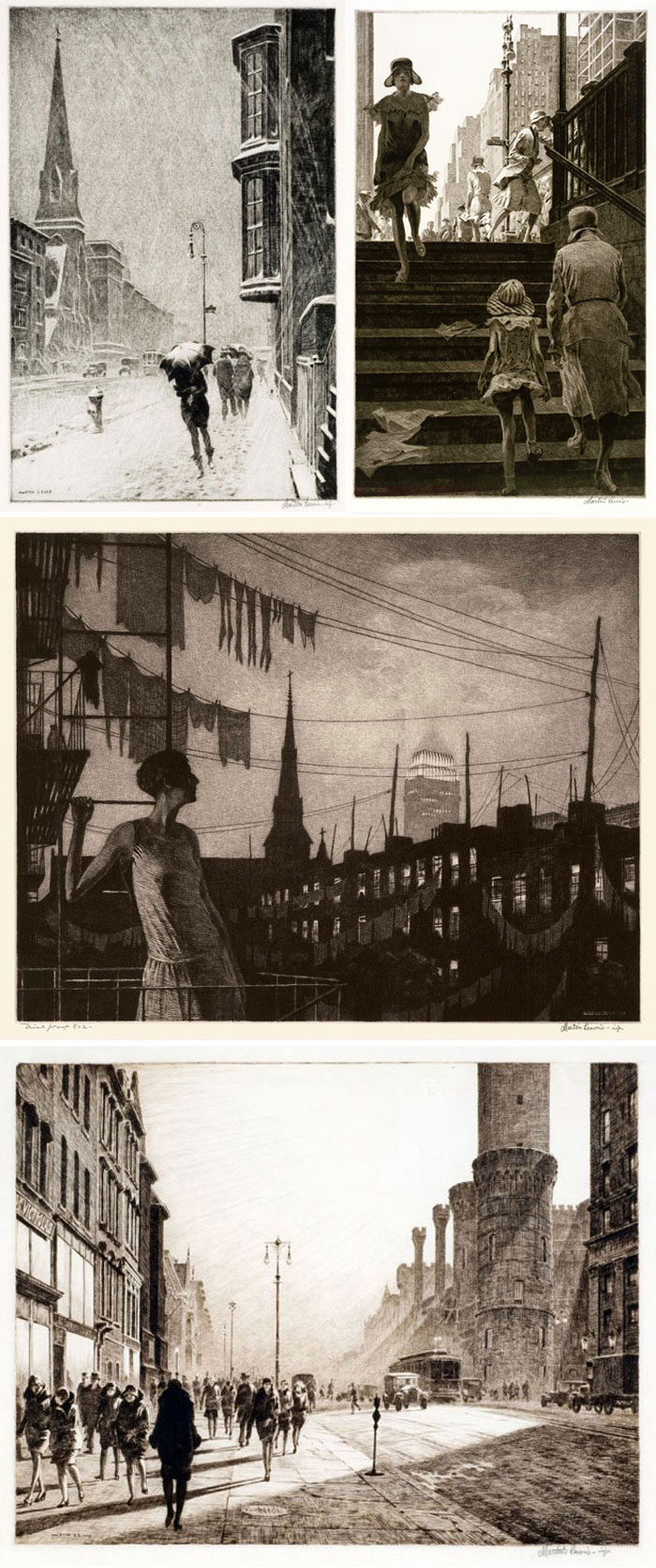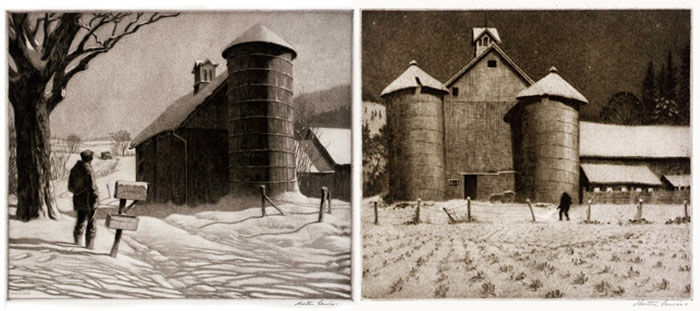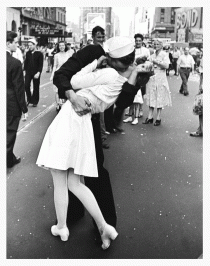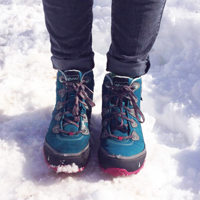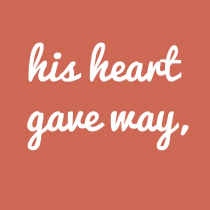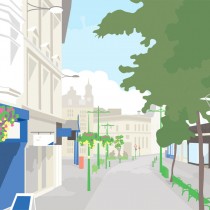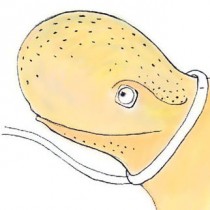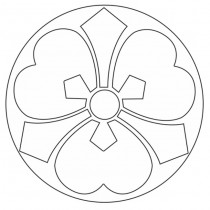Martin Lewis
|
These images are subject to copyright and may not be reproduced without permission.
b.1881, Victoria, Australia Martin Lewis was an Australian illustrator who emigrated from Sydney to San Francisco, USA, in 1900, when he was just 19 years old. I am as much fascinated by his life story, as I am by his beautiful artwork—Lewis should have/could have/would have been as hugely famous as his popular pal, painter Edward Hopper, but somehow, mysteriously, he died an almost unknown. Lewis moved to New York City in his late 20′s, where he found work as a commercial artist, creating magazine advertisements and illustrations. For the next decade (1910-1920) he cultivated an artistic skill as a printmaker, developing his distinctive style of etching and his preferred method, drypoint. It is thought that Lewis must have dabbled in etching back in Australia because his ‘first’ print, produced in 1915, is just too damn good to be his true first print. I find it encouraging that he did not seriously start down the printmaking path until he was 34 years old—There is hope for the rest of us yet! In 1920 Lewis moved briefly to Japan where he educated himself about woodblock printing which would influence the style of his future work—His figures became more lithe and elegant, and he played with sympathetic weather such as snow, fog and rain. It is impressive that even whilst traveling to a far away land, Lewis continued print. He clearly had a passion for the craft that surmounted the physical obstacles of locating metal plates, needles, inks, paper, and not to mention a printing press. Drypoint is the technique of ‘scratching’ the surface of a metal plate with a hard needle, then inking up the plate to ‘transfer’ the image to paper, via a press. No acid is used—as with etching—which must have made the process a smidge easier for the traveling Lewis. A few years after his return to his beloved New York City, Lewis held his first solo exhibit, in 1929. Around this time, he started to enjoy recognition as an artist and became popular enough that he was able to give up commercial work and become a full-time, bonefide artist! Finally, at the age of 48, he was experiencing success. Lewis is known for his beautiful depictions of New York City in the late 1920’s and 30’s. He chose to illustrate scenes with strong lighting that allowed for a dramatic shadowing effect. He includes people in most of his prints—Crowds of people running Saturday morning errands, folks battling a snow storm in Brooklyn, groups of excited women going out on the town, commuters descending or ascending the subway steps—But for the cars and the clothes, these NYC scenes could have been depicted only yesterday.
After years on the climb, what came next may have been a blow: 1932 and The Depression. Lewis decided to downsize from pricey New York City and move to the more affordable Newtown, Connecticut. His dramatic change of scenery was reflected in his artwork which now focused on the pastoral and farming scenes of Newtown, which was a big departure from his hustle bustle scenes of vibrant New York City. His softer prints from this era show a slower life with fuzzy-edged shadows and solitary people.
In 1936 Lewis returned to New York City to find that his four years away had made a huge difference: His supporters had lost momentum in his absence and his once eager markets were no longer interested in his work. Lewis became an instructor at the Art Students League in 1944 until his retirement in the early 50′s. Sadly, and quite amazingly, he died, at age 81, mostly forgotten… …But not completely! In 1998 the Brooklyn Museum of Art held an exhibit of a whopping 77 works. How I wish I could have seen it! I hope they dust them off and showcase them again sometime soon—I am positive that New Yorkers, with their love of the prohibition era, would flock to view them. In 2011, The Bruce Museum, Greenwich, Connecticut held an exhibit from the collection of Dr. Dorrance Kelly. Much to my dismay, I discovered Lewis a few months after the exhibit closed, but the The Bruce was incredibly kind to mail me a copy of the accompanying program which presents 31 prints from the collection. My hat is off to Martin Lewis—His work is uplifting and utterly stunning. Sources: The Brooklyn Museum: Martin Lewis’s World: Cityscapes on Paper The Bruce Museum: The Prints of Martin Lewis from the Collection of Dr. Dorrance Kelly The Smithsonian American Art Museum
|
